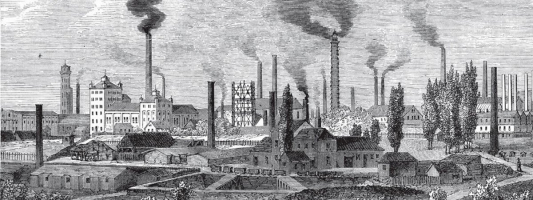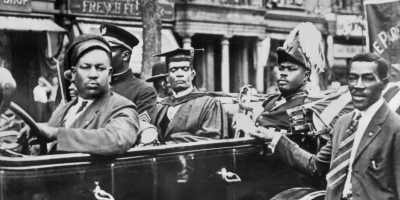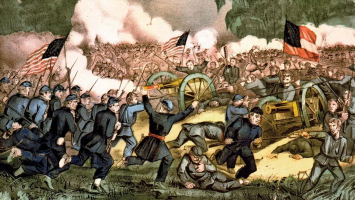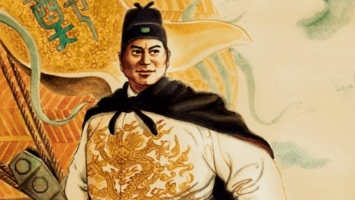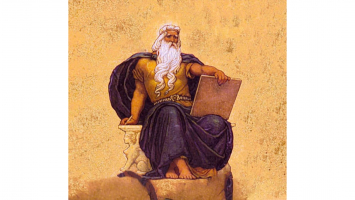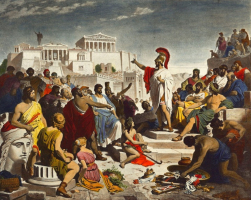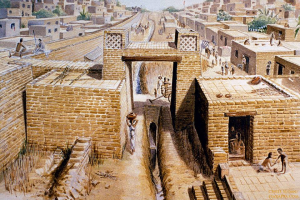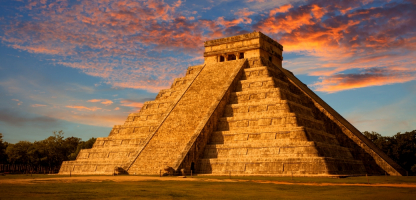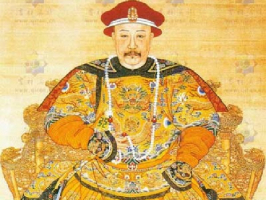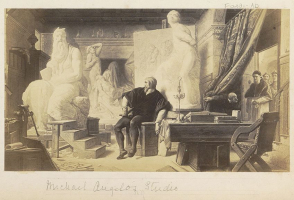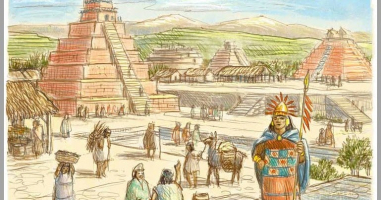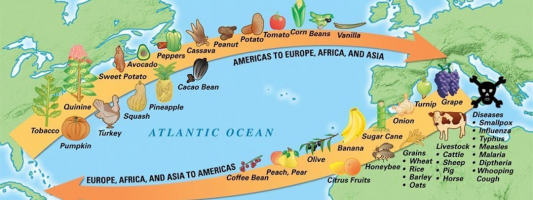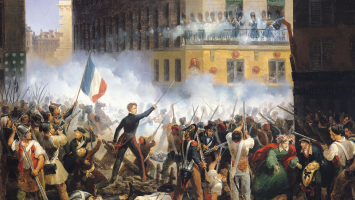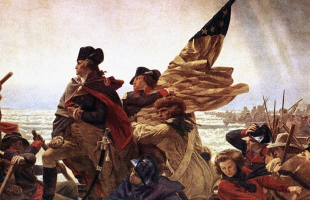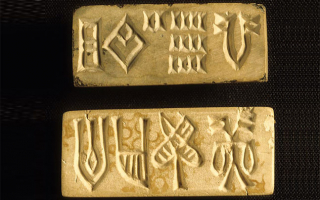Top 10 Interesting Facts About The Reformation Leader, Martin Luther
Martin Luther (1483-1546) was a German religious lecturer, composer, priest, and monk. He is considered one of the most influential figures in European ... read more...history, having changed the religious picture of the continent with his courageous and persistent faith. Luther, often regarded as the leader of the Protestant Reformation, altered the position of the Bible within the Christian faith and created a religious reform movement that challenged Europe's most powerful force - the Catholic Church. Here are 10 interesting facts about Martin Luther.
-
Martin Luther, the son of Hans and Margarethe Luther, was born on November 10, 1483, in Eisleben, Saxony. Luther, the eldest child in a big family, received a rigorous education. Martin Luther earned a master's degree at the University of Erfurt in 1505. He might now follow one of three "higher" disciplines: law, medicine, or theology. He finally decided to enroll in studying law since his father expected him to become a lawyer.
Around this period, an event occurred that forever altered Luther's life. When he was cycling back to university from a trip home, he was caught in a sudden powerful thunderstorm near the village of Stotternheim and was almost killed by lightning. Luther was so horrified by the weather that he cried out for protection to St. Anne, "Save me, St. Anne, and I'll become a monk!" Martin was determined to keep his word after escaping safely. Many historians argue that this episode was merely a stimulant and that Luther's desire to become a monk was already formed in his mind. Furthermore, his friends thought that the recent deaths of two friends may have played an important role in his decision to become a monk.
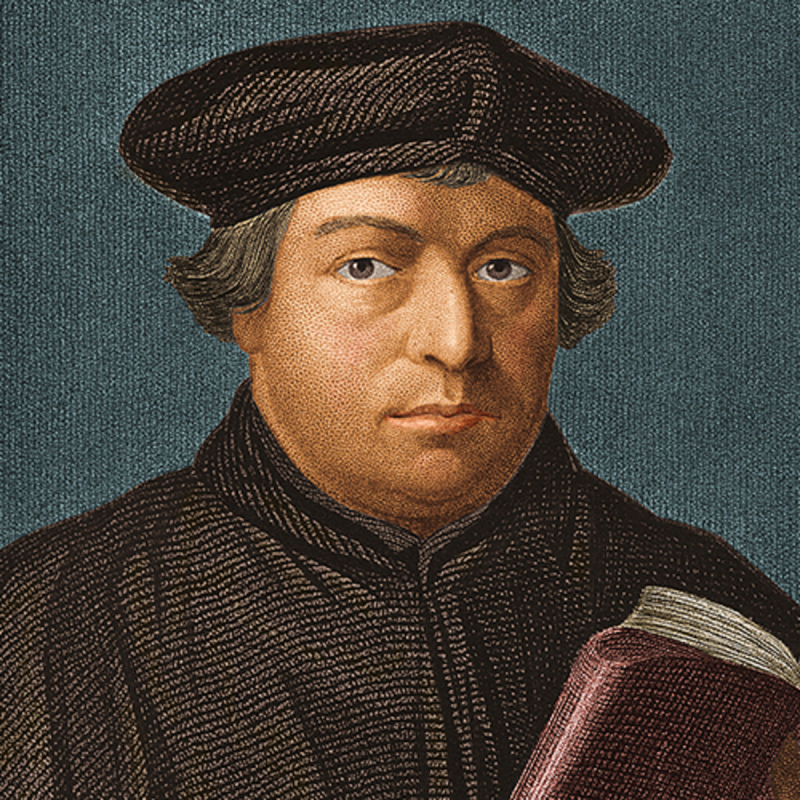
biography.com 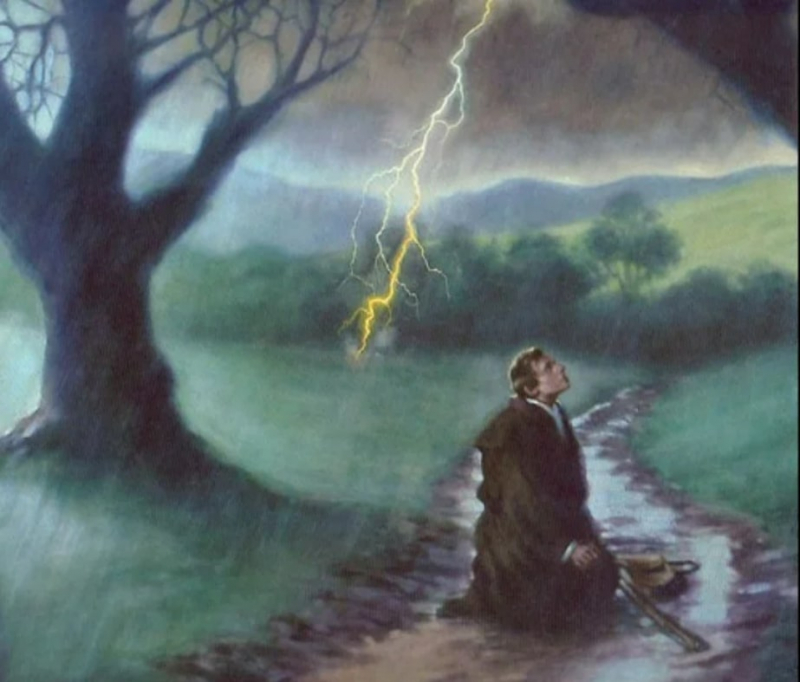
behance.net -
In 1516, Archbishop Albrecht von Brandenburg, who was deeply in debt, got permission from Pope Leo X to sell a unique plenary indulgence that would offer forgiveness of the temporal punishment of crime. In response, Martin Luther decided to write a letter to Albert of Brandenburg on October 31, 1517, enclosing a copy of his “Disputation of Martin Luther on the Power and Efficacy of Indulgences”. This later became known as the Ninety-five Theses.
Despite aiming to begin an academic discussion on church customs rather than an all-out attack on Catholic Rome, his tone was accusatory, as evidenced by Thesis 86, in which he asked: “Why does the pope, whose wealth today is greater than the wealth of the richest Crassus, build the basilica of St. Peter with the money of poor believers rather than with his own money?”
According to common belief, on Saturday, October 31, 1517, Luther nailed a paper of his Ninety-five Theses to the entrance of the Wittenberg Castle church. This important event is recognized as the beginning of the Protestant Reformation, and October 31 is celebrated every year as Reformation Day.
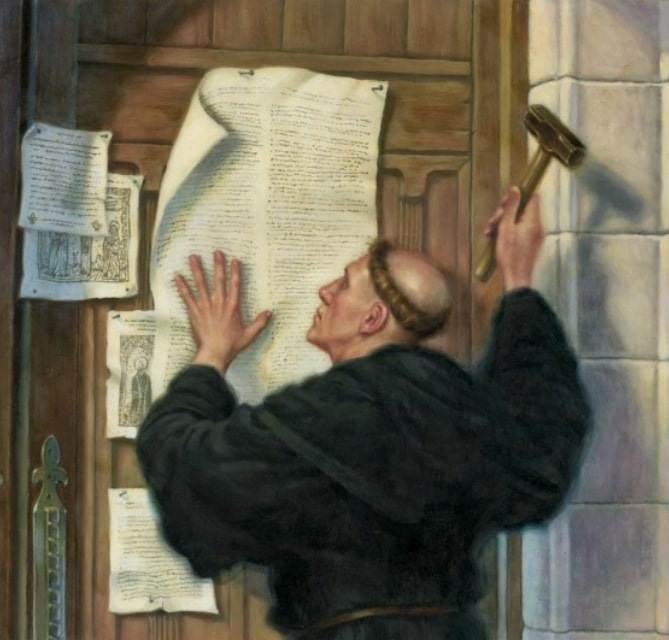
Martin Luther nailing his 95 Theses to the church entrance- Photo: thegospelcoalition.org 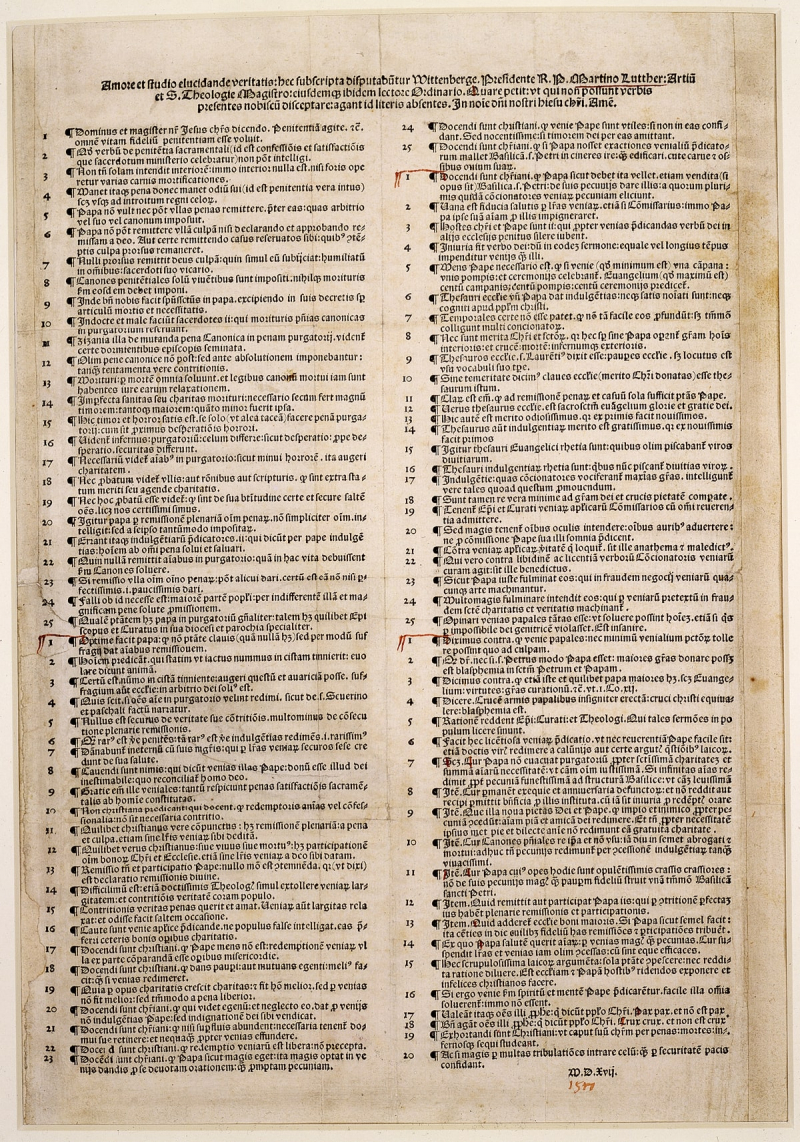
Ninety-five Theses - Photo: en.wikipedia.org -
When Luther's theses were translated from Latin into German by his friends in 1518, they spread quickly throughout Germany. With the help of the newly invented printing press, they had reached France, England, and Italy by 1519, during which time the term "Lutheranism" was first used.
Initially created by his opponents as a disparaging term for what they considered heresy, Lutheranism became established as the name for the world's first true Protestant theology during the course of the 16th century.
Luther did not like the term and preferred to call his philosophy Evangelism, from the Greek word for "good news," but when different branches of Protestantism emerged, it became more vital to specify precisely to which faith one committed.
Lutheranism still preserves many of the pre-Reformation Western Church's liturgical traditions and sacramental beliefs, with a special emphasis on the Eucharist, or Lord's Supper, however, Eastern Lutheranism employs the Byzantine Rite. Lutheran theology varies from Reformed theology in terms of Christology, divine grace, the purpose of God's Law, the concept of perseverance of the saints, and predestination.
During the Reformation, Lutheranism gained the state religion of many northern European countries, particularly northern Germany, Scandinavia, and the then-Livonian Order. Lutheranism is still one of the largest Protestant denominations today.
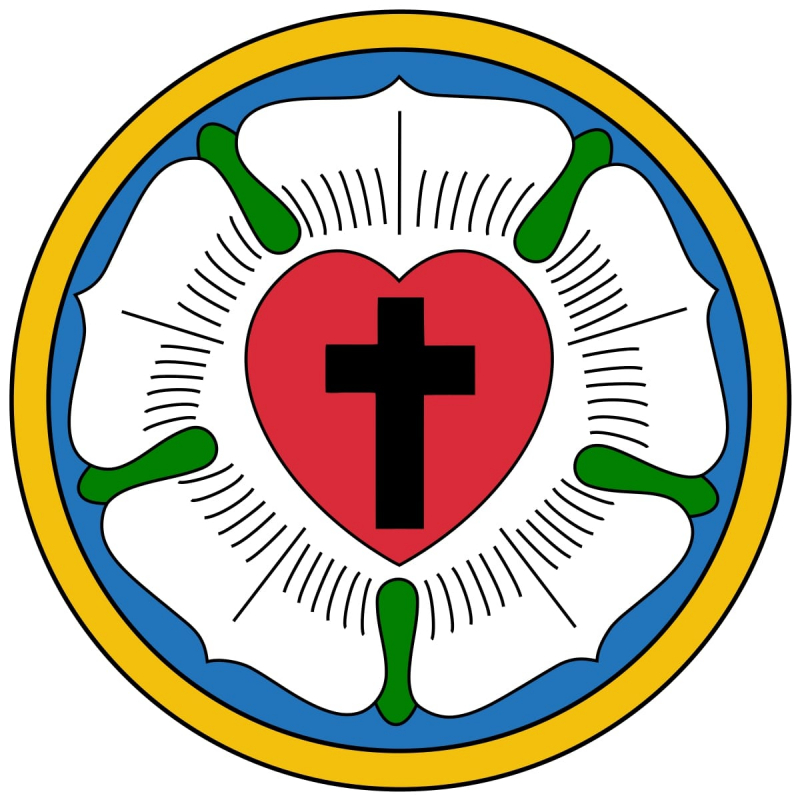
The Luther seal or Luther rose as the symbol of Lutheranism - Photo: wikipedia.org 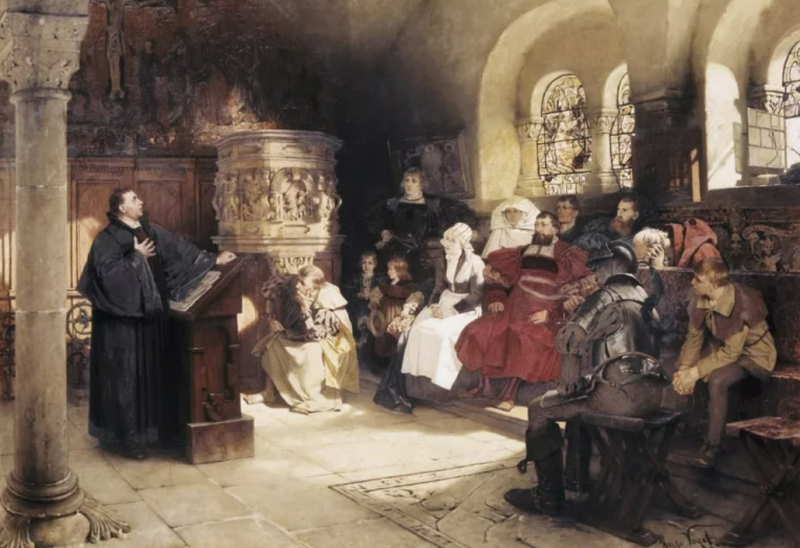
Martin Luther Preaches in Wartburg by Hugo Vogel - Photo: learnreligions.com -
Luther quickly became a thorn in the side of the papacy. On June 15, 1520, Pope Leo X announced a public decree warning Martin Luther that if he did not retract 41 sentences from his works within 60 days, he would be excommunicated. Instead, on December 10, Luther officially set fire to the order. On January 3, 1521, the Pope excommunicated Luther.
Then, on April 18, Luther was invited to Worms, Germany to attend the Diet, a large assembly of the Holy Roman Empire. He was asked to renounce his writings once more during the Diet of Worms. He emphasized, however, that he would be influenced only by reason or if it was written otherwise in the holy scriptures. He finished his testimony with a strong statement: “Here I stand. God help me. I can do no other.”
Holy Roman Emperor Charles V instantly declared him a heretic and an outlaw. His arrest was ordered, his books were prohibited, it became unlawful to shelter him, and killing him in broad daylight would result in no consequences.
Understanding how tense the situation was, Luther's protector, Frederick the Wise, decided that he needed to remain hidden until the Church's passions calmed. As a result, he directed a group of knights to "kidnap" Luther, who was subsequently brought to a castle in Eisenach. For almost a year, Luther lived in a disguise as a nobleman named "Junker Jörg".
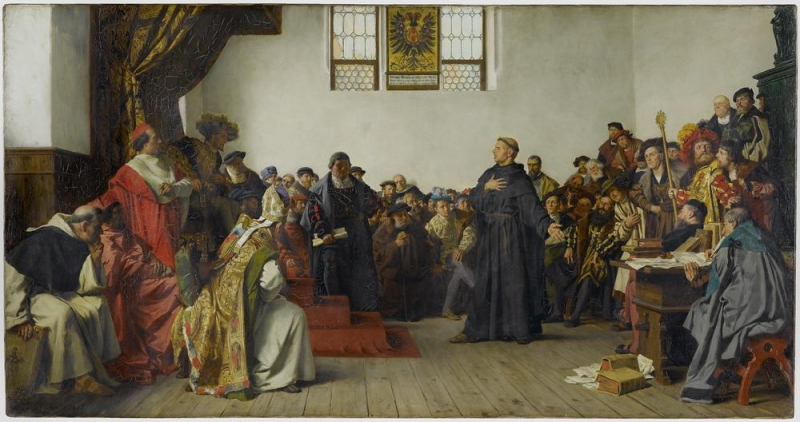
Luther at the Diet of Worm - Photo: commons.wikimedia.org 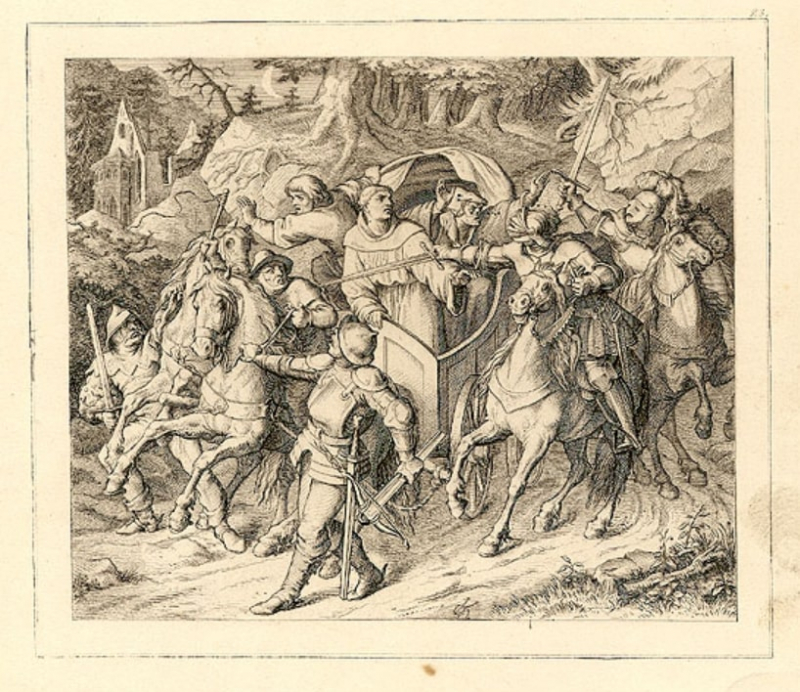
Luther was kidnapped - Photo: kingdomofthebirds.wordpress.com -
Martin Luther began translating the Psalms into German as early as 1517. In 1521, when he was kidnapped and hidden in Wartburg Castle in Eisenach, he commenced translating the New Testament from Greek into German, believing it to be a critical task. This massive effort was an instant success.
Luther accomplished the translation by himself in 11 weeks, averaging roughly 1,800 words per day. Luther's translation, published in 1522 in common German, was a huge success and critical to the development of the Reformation in German-speaking areas due to the way language was used. His work had a significant impact on the development of the German language. Hochdeutsch, High German, unified the many dialects, with its romanticism exposing its literary and poetical features.
Obviously, the translation would have some errors. Some were swiftly corrected, particularly errors concerning the book of Job. Others emerged as a result of breakthroughs in language and Biblical exegesis. Despite many revisions to Luther's translation, the version currently in use by German speakers has mainly preserved the reformer's theology.
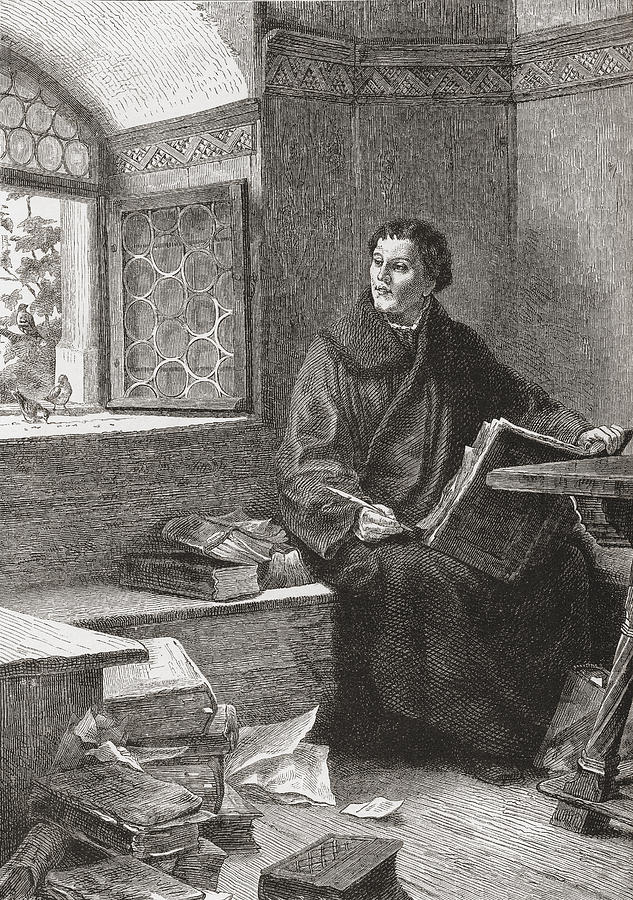
Martin Luther Translating The Bible - Photo: lutheranreformation.org 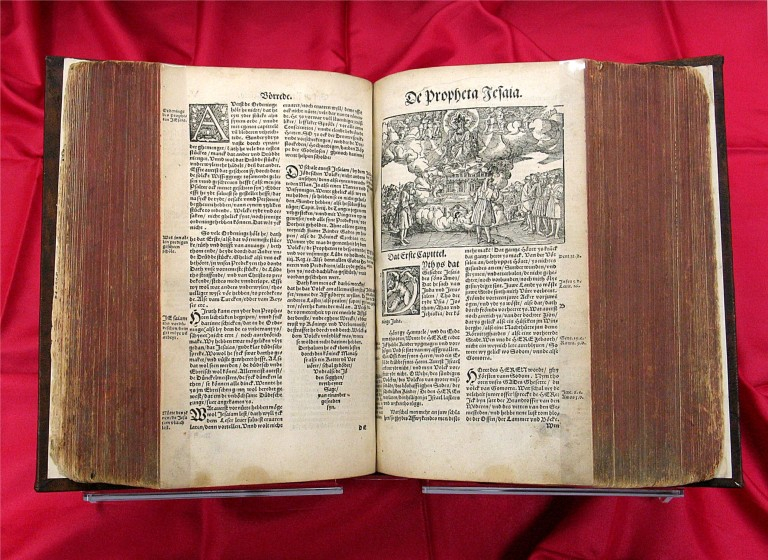
Luther’s Translation of the Bible - Photo: lutheranreformation.org -
Katharina von Bora spent her childhood at convent schools before becoming a nun. After several years of monastic life, however, she became unhappy with her life in the convent and became interested in the Reformation movement.
She gathered other interested nuns and wrote to Martin, pleading for help. Martin ordered Leonhard Koppe, a trader who frequently provided herring to the convent, to assist the nuns in their escape on Easter Eve 1523. They accomplished this by hiding among the fish barrels in his covered wagon.
In two years, Martin found houses, marriages, or jobs for everyone of the escaped nuns except Katharina, who was insistent on getting married to Martin. Despite careful consideration of the consequences, Martin Luther married Katharina von Bora on June 13, 1525, and moved into the "Black Cloister," where von Bora immediately took over the administration of its large properties.
It was a happy marriage. Luther often called her the "morning star of Wittenberg" throughout their marriage, and the couple had six children together. This sparked a big scandal among Catholics while also allowing other pastors in Lutheran churches to marry. Katharina is regarded as a key figure in the Protestant movement, having helped define Protestant family life and shape its views on clergy marriages.
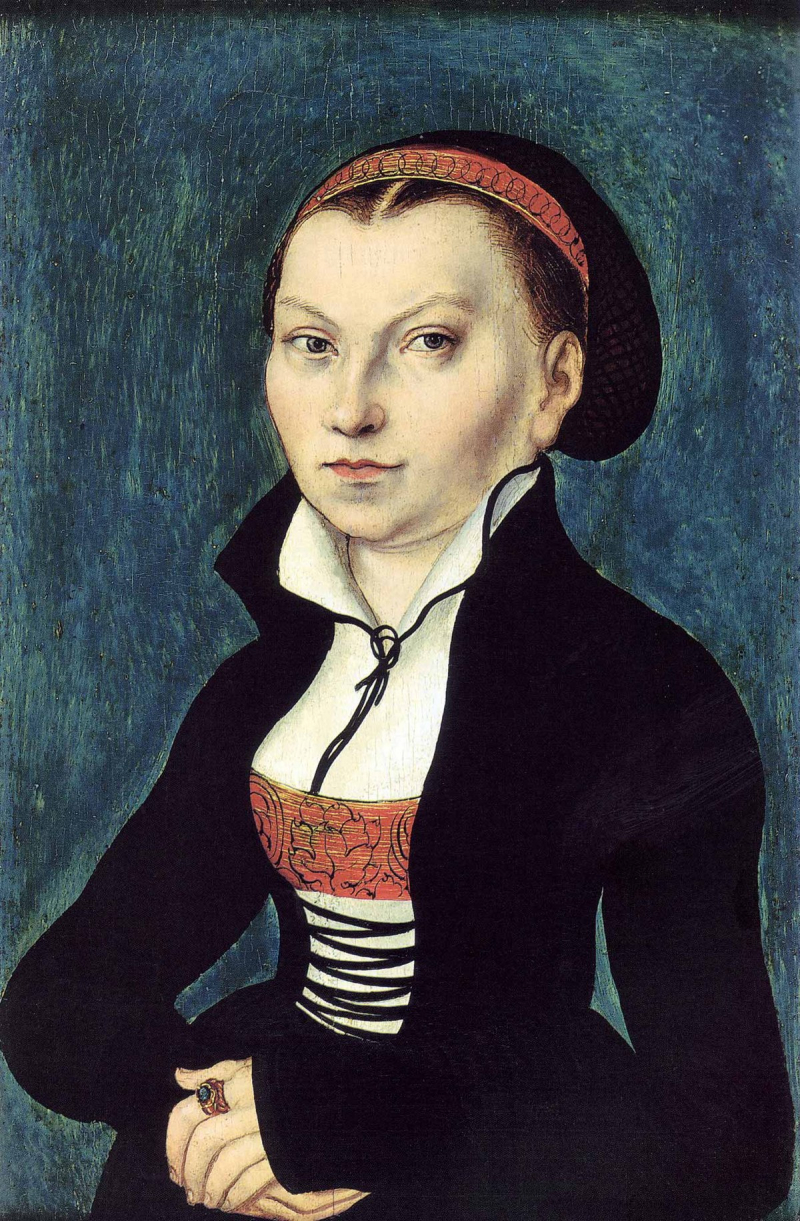
Katharina von Bora - Photo: vi.wikipedia.org 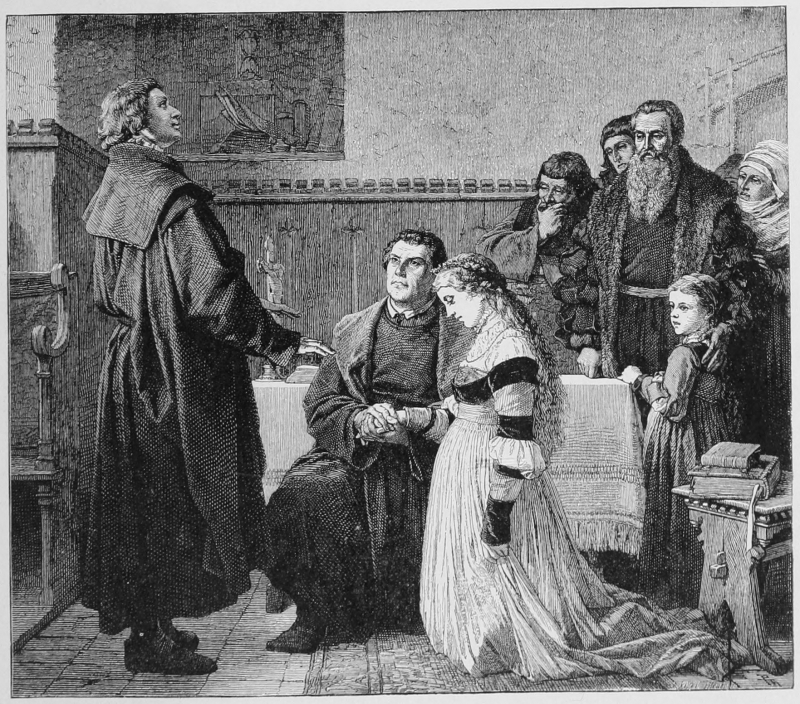
The wedding of Martin Luther to Katharina von Bora - Photo: commons.wikimedia.org -
Martin of Tours was born in the Diocese of Pannonia around AD 316 or 336 at Savaria (now Szombathely, Hungary). His father was a Roman army senior officer (tribune). In the fourth century, he also served in the Roman army. He was a soldier that declined to shoot people because it went against his Christian beliefs. He did it immediately before the battle of Borbetomagus in the Gallic provinces (now Worms, Germany). As a result, he was accused of cowardice and imprisoned. He was finally released and decided to become a monk.
Saint Martin has become one of the most well-known and prominent Christian saints in France, as well as the patron saint of the Third Republic and many communities and organizations throughout Europe. Martin Luther received his name from Saint Martin when he was baptized on St. Martin's Day (November 11). Martin of Tours and Saint Martin share significant similarities in that both left other paths to become monks. Furthermore, Martin of Tours held his protest in Worms, the same city where Luther had his famous Diet of Worms.
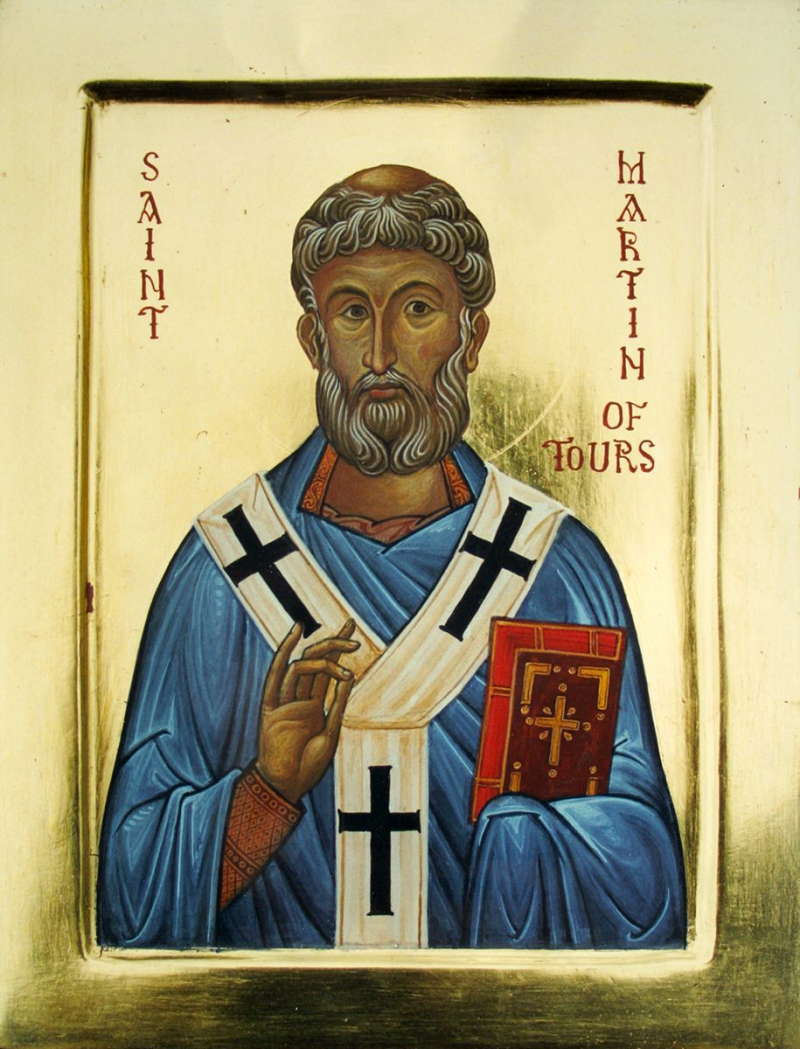
Saint Martin of Tours - Photo: aidanharticons.com 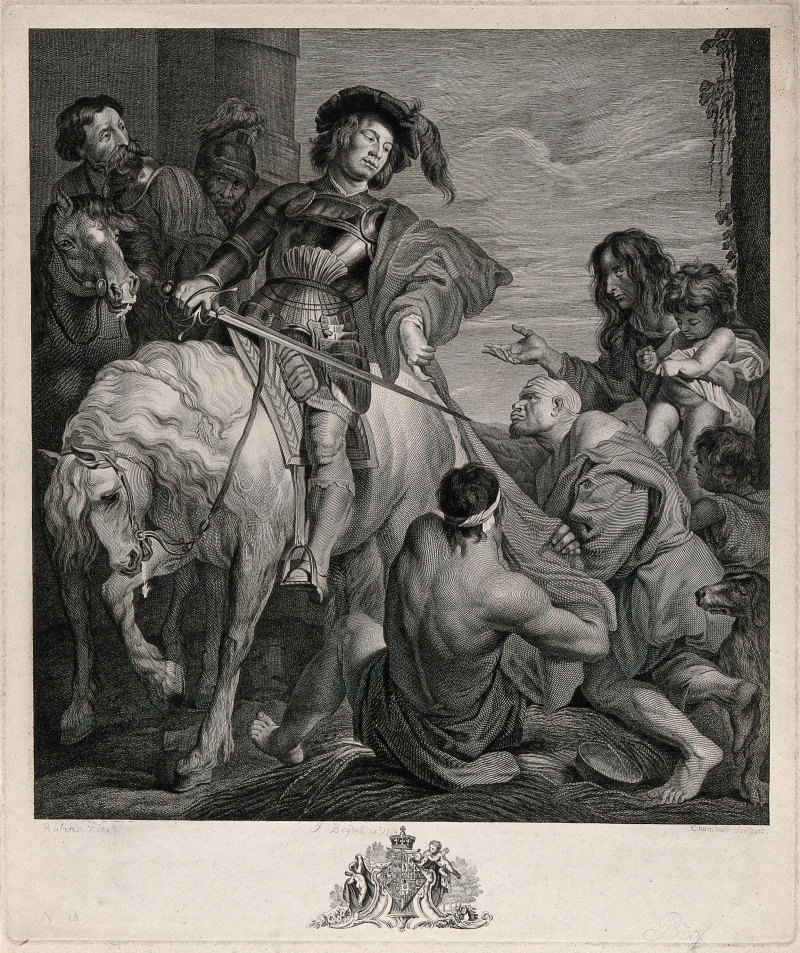
Saint Martin dividing his cloak to give half to a beggar - Photo: wellcomecollection.org -
Michael J. King, a pastor from Atlanta in the American state of Georgia, traveled to Germany in 1934. While visiting Martin Luther's memorials, he was so impressed by Luther and the events of the Reformation that he changed his name to Martin Luther King. As a result, he renamed his five-year-old son Martin Luther King Junior.
Martin Luther King Jr. then become one of the twentieth century's most well-known leaders. He was the most prominent leader of the American Civil Rights Movement who made his efforts to fight against discrimination against African Americans in the United States. He also organized and led numerous protests for black voting rights, desegregation, labor rights, and other fundamental civil rights. His endeavors were finally rewarded when the Civil Rights Act of 1964 and the Voting Rights Act of 1965 were approved, and most of these rights became law.
On October 14, 1964, He was awarded the Nobel Peace Prize for his peaceful opposition to racial injustice in the United States. He was the youngest person who received the award at the time, at the age of thirty-five.
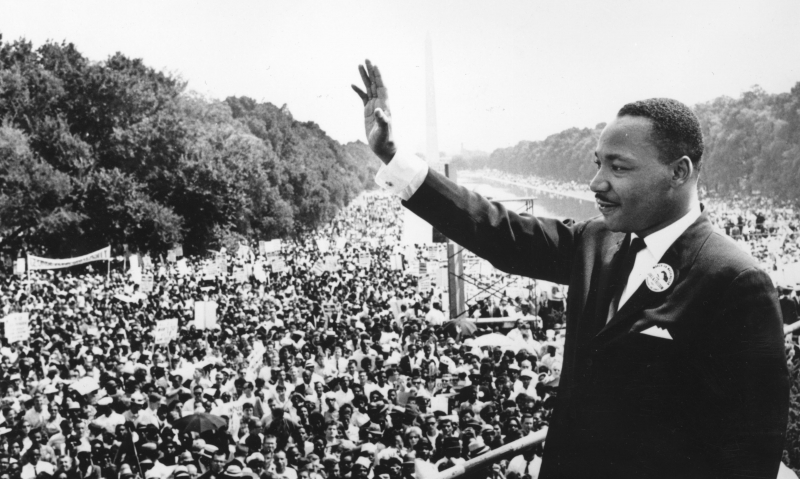
Martin Luther King Jr. - Photo: npr.org 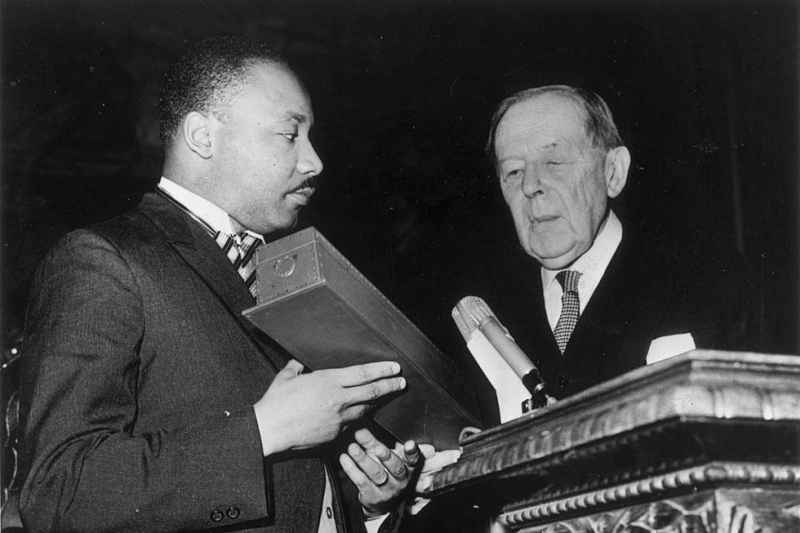
Martin Luther King Jr. with the Nobel Prize - Photo: loudwire.com -
Martin Luther considered music, particularly German hymns, as an essential factor of faith development. He blended folk music with high art and wrote for people of all social classes, ages, and genders.
Luther composed liturgical songs (Advent, Christmas, Purification, Epiphany, Easter, Pentecost, Trinity), catechism hymns (Ten Commandments, Lord's Prayer, Creed, baptism, confession, Eucharist), paraphrases of psalms, and other songs. Whenever Luther deviated from pre-existing materials (bible, Latin, and German hymns), he vastly extended, changed, and personally interpreted them.
In collaboration with Johann Walter, Luther worked on the tunes, occasionally revising older tunes. In 1524, hymns were published in the Achtliederbuch, Walter's choral hymnal Eyn geystlich Gesangk Buchleyn (Wittenberg), and the Erfurt Enchiridion (Erfurt), among other places.
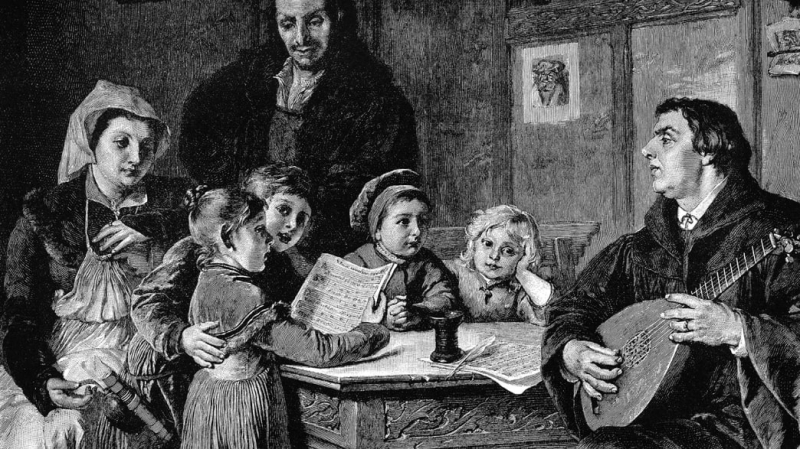
christianitytoday.com 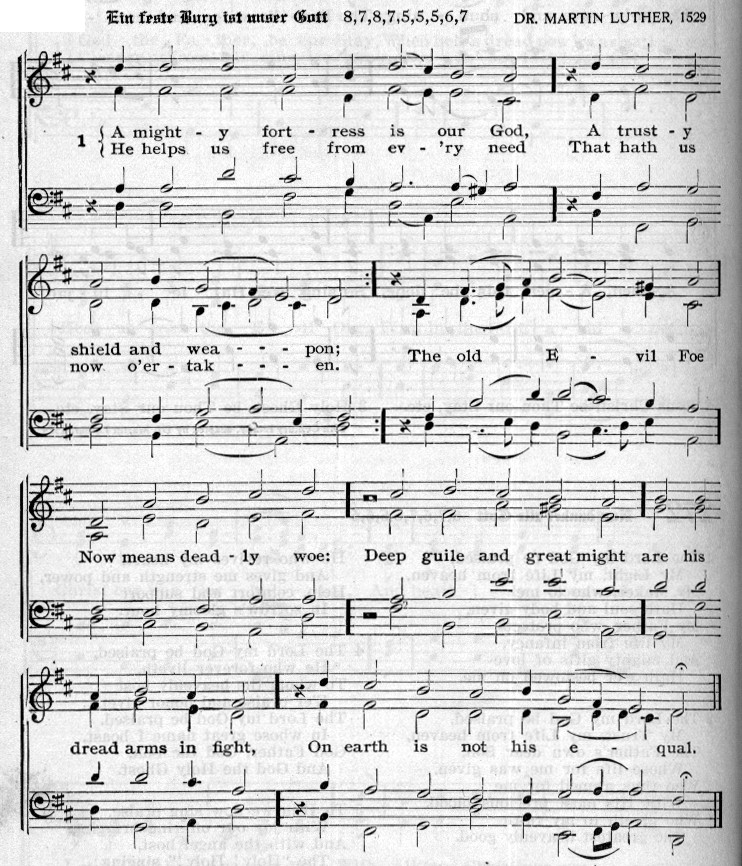
A Mighty Fortress Is Our God - A hymn by Martin Luther - Photo: wikiwand.com -
Jan Hus (1370-1415), a Czech priest, was a pivotal figure in the Bohemian Reformation, which predated the Protestant Reformation. His name meant "Goose" in the Bohemian language. Hus was excommunicated and burnt at the stake on July 6, 1415, for speaking out against the church. Before being burnt, he said that “You are now going to burn a goose, but in a century you will have a swan which you can neither roast nor boil”.
On October 31, 1517, almost precisely a century later (102 years), Martin Luther nailed his 95 Theses on the entrance of the Castle Church at Wittenberg, kicking off the Protestant Reformation. As a result, many people thought that Jan Hus' prophecy came true.
Furthermore, Martin Luther was hugely affected by Hus' beliefs, and he also called himself the swan that Hus predicted. This prophecy was addressed in the sermon at Luther's death in 1546. Also, because of Jan Hus' prophecy, the swan became a famous image linked with Martin Luther, and it may be found regularly in Lutheran art. And this explains why Lutheran Press proudly displays the swan logo and continues to "Trumpet the Swan!"
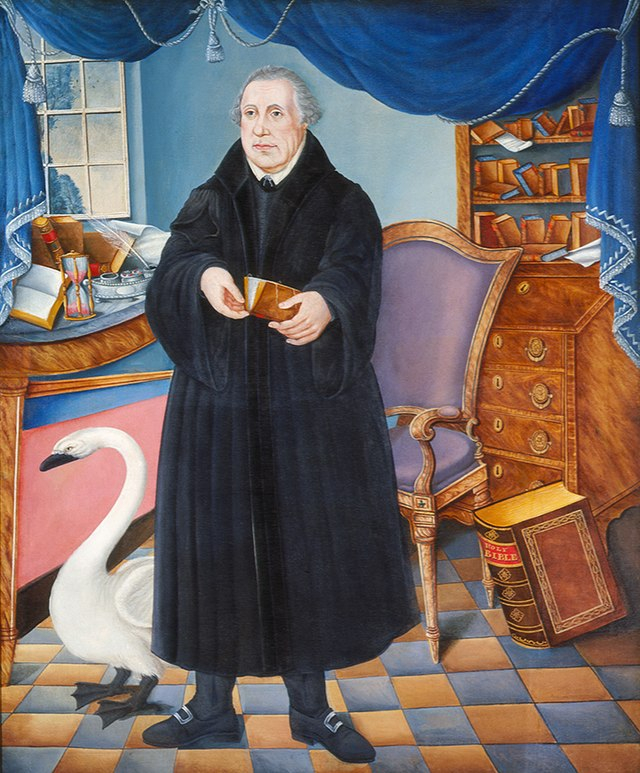
Portrait of Martin Luther - Photo: commons.wikimedia.org 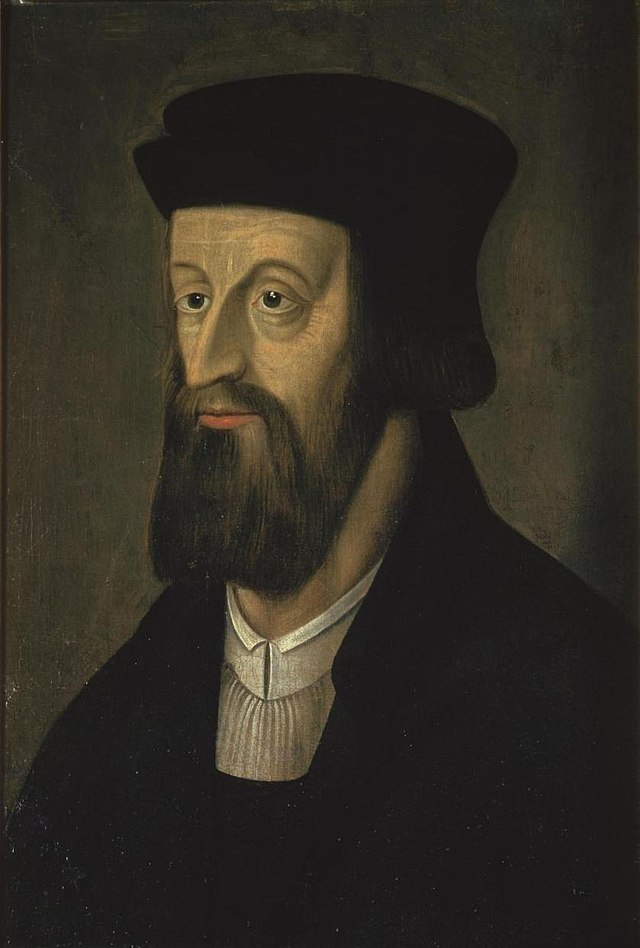
Jan Hus - Photo: vi.wikipedia.org












